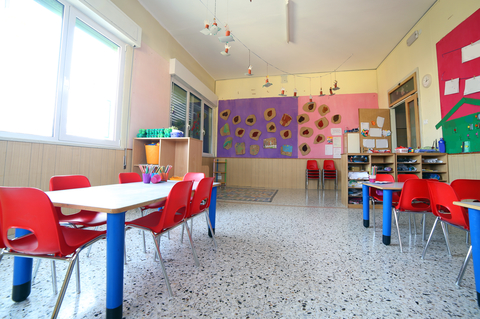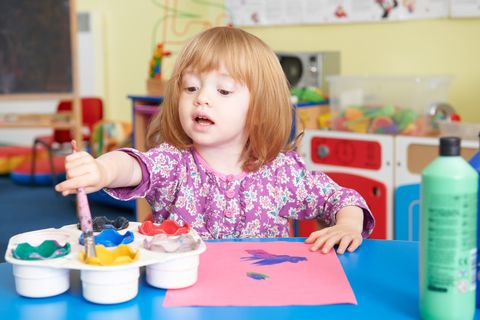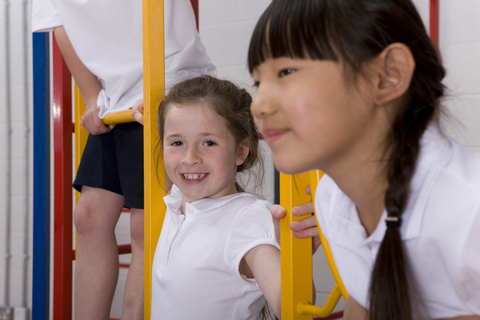Decisions relating to flooring choices within schools should not be taken lightly, as several factors need to be considered prior to installation. First and foremost, flooring choices must be appropriate for the types of activity which occur within particular spaces. There is no one-floor-fits-all solution for schools.
When evaluating flooring options for your school, you need to strike a delicate balance between the following considerations:
- Fit for purpose. For example, the floor of a dance studio is a specialised surface, and quite different to that in a laboratory. When choosing floors for classrooms, consider such factors as whether the children will engage in activities on the floor.
- Value for money: Flooring solutions must fit within school budgets. To get the best value for money, look beyond installation costs. Consider a floor’s life cycle and maintenance costs. Where possible, choose durable flooring which can withstand generations of use.
- Effective cleaning: Choose materials that can be easily cleaned using cost-effective cleaning methods. Different types of material require different cleaning methods. If surfaces are mopped with boiling water or steam-cleaned, floor finishes must be able to withstand high temperatures and the cleaning products used on them.
- Safety: Schools have a duty of care to provide students and staff with a safe and healthy working environment. They can do this by choosing flooring materials which minimise the risk of injury and illness. Floors which minimise the risk of slips and falls, asthma, allergies, and which control the spread of infection are crucial in child-friendly environments.
- Noise control/physical comfort: Schools are bustling environments. The movement and activities of large groups shouldn’t disturb the activities of others. Floor coverings affect the acoustics of learning spaces. Certain materials reduce or control levels of noise more than others.
- Aesthetics: Teachers, students, and staff benefit greatly from aesthetically pleasing spaces which encourage a sense of community and inspire creativity.
Classrooms, Corridors, Libraries, and Staffrooms
Several flooring materials are suitable for classrooms, corridors and staffrooms such as vinyl, linoleum, rubber, or carpet. Vinyl composition tile or vinyl sheeting is a popular choice, particularly in secondary schools, as it is cheaper to install than carpet. It’s durable, stain-resistant, looks good when waxed, withstands heavy foot traffic and wheeled trolleys. Sheet vinyl has fewer joining seams than vinyl tile, which prevents the build-up of grime and dirt.
Linoleum has similar properties to vinyl. An acrylic sealer can increase linoleum’s stain resistance. Linoleum is a more sustainable and allergy-friendly choice then vinyl, as the former is made from natural resources
Rubber is increasingly used in schools throughout Australia, especially corridors and entryways. Although expensive to install, rubber is soft, durable, shock absorbent, easy to clean, and stain-resistant. It can withstand heavy foot traffic and its high coefficient of friction creates grip and stability, guarding against accidents.
Carpet continues to be the most popular choice for schools, particularly in kindergartens where students sit on the floor. Many institutions opt for carpet tiles. Unlike traditional broadloom carpet, stained sections of carpet tiles can be replaced. Carpet tiles come with their own backing, which eliminates the cost of separate padding. They have a seventeen-year lifespan, compared to a ten-year lifespan for traditional carpet. Carpet tiles can be cut to fit particular areas. This reduces potential errors and allows purchasers to trial different patterns and styles prior to application.
Carpeted areas are soft, warm, comfortable to stand or sit on for long periods of time. They are easy to maintain if they are regularly steam cleaned to prevent bacteria build-up and staining. Water-resistant carpet can help avoid staining. Carpet reduces ambient noise which makes it a great material for use in areas like libraries and classrooms. Darker colours and patterns add character to learning areas and conceal stains more effectively than lighter ones. Carpet is a sustainable choice, as it can be recycled.
Playgrounds and Indoor Sports Areas
Rubber is a material of choice for child-friendly play areas. Rubber tile flooring is soft, durable, and resistant to most stains. A tile’s thickness determines its softness. For playgrounds and active areas, rubber tiles should be at least 2 inches thick.
Cork is a good alternative choice as it provides traction and has a springy feel which children find attractive. Its softness reduces the likelihood of injury. It is a natural, sustainable material. However, cork is easily damaged which makes it unsuitable for rough play or heavy foot traffic.
Hardwood is the traditional flooring choice for indoor sports areas. However, hardwood surfaces are high maintenance and less versatile than other options such as wood-patterned vinyl.
Sports vinyl is suitable for multipurpose gymnasiums or school halls which host assemblies, and other events. Sports vinyl is durable, shock absorbing, low maintenance, inexpensive, and it withstands the wear and tear of active play. Sports linoleum is another versatile option which is shock absorbing, durable, abrasion resistant, and low maintenance. Linoleum is suitable for light recreational activities and for gyms that double as cafeterias.
Pad and pour polyeurethane rubber flooring is suitable for all indoor competitive sports as it can withstand heavy equipment, high point loads, and rolling loads. It is commonly used in multipurpose sports areas and gymnasiums. Its seamlessness prevents dirt build-up. This material is available in rolls or tiles.
tHospitality Kitchens, Science Laboratories, and Technical Studies Areas
Flooring for school kitchens, laboratories and technical studies areas must be impact and abrasion resistant, chemically resistant, non-combustible, and able to withstand a wide rang of temperatures. There is a high risk of spillages, fire hazards, and accidents in such environments. The ideal flooring materials are easy to clean, non-slip, durable, stain resistant and non-absorbent. They are hygienic, oil and grease resistant, chemically resistant and electrostatic dissipative. Suitable surfaces include vinyl, linoleum, resin, ceramic and rubber tile or sheet flooring options. Oil and grease resistant PVC tiles prevent fatigue and increase comfort when standing on hard surfaces.
Many schools opt for sheet or tile heavy-duty vinyl flooring with slip-resistant aggregate. However, all tiling and sheeting options have a downside. Loose or missing tiles are trip hazards which can harbour bacteria. While vinyl is cost-effective and low maintenance, welded sheet or tile joints and perimeters can peel away over time, allowing spillages and bacteria to wash into the gap under the sheeting. The floor then becomes a breeding ground for microbes and fungal growth. The more expensive option of seamless resin flooring avoids this. However, care must be taken to ensure that the flooring is thick enough to withstand prolonged exposure to high temperatures.
Consider All the Options
When choosing floors for your school, it is important to weigh up the pros and cons of each option in terms of purpose, comfort, safety, durability, cost-effectiveness, maintenance, acoustics, and aesthetics. Finding a balance between these factors is a recipe for success.
Sources
“Best Flooring for School Kitchens.” Arcon Construction Supplies. 2016.
“Commercial Carpet.” Allway Matting and Flooring. 2018.
“Educational Flooring.” ProCarpet. 2017.
“Education Flooring.” Comfloor Commercial Floor Coverings. 2018.
“Sports Flooring Guide: Types of Flooring.” TarkettSports.
“Student Safety Guidelines: Technology.” Department of Education & Training. Government of Victoria. 2015.
“What is the best flooring material for laboratories?” Arcon Construction Supplies. 2016. <http://www.arconsupplies.co.uk/uses/laboratory-flooring>.
Holtham, Alan. “Planning Your Workshop Floor.” Woodworkers Institute.com: Furniture & Cabinetmaking. 24 August 2010.
Keltie, Ross. “Why You Should Consider Roppe Rubber Flooring for Schools.” iRubber. 2016.
Kollie, Ellen. “Flooring: Putting Your Foot Down.” School Planning & Management. 1 May 2014.
Lewitin, Joseph. “Commercial Flooring for Kids: The Best Options for Schools, Playgrounds, Nurseries, and Daycare Centres.” The Spruce. 18 June 2018.
Plaskota, Tom. “Resilient Flooring for Schools: Why, Where and How.” TEC. 10 September 2014.


